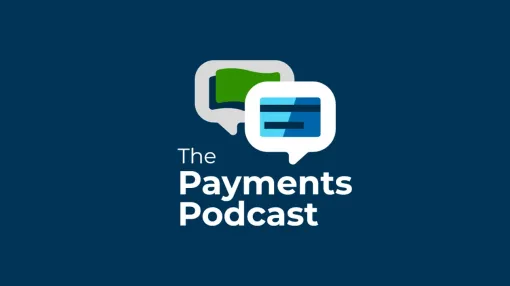What goes in Vegas stays in Vegas, right? Not the case with my recent experience at the Nacha conference where the topics ranged from fraud defense to business payments network security to same day ACH to real-time payments. I couldn’t get to as many sessions as I wanted to, but I did have great meetings with current and potential customers and spoke to many attendees on the show floor. I came away with a sense that real-time payments will continue to see more B2B use cases, and it certainly has the attention of the industry. But at the half-way mark of calendar 2023, the main thing Nacha validated for me was that knowing your customer and their specific payments needs will never get tired. It is still the key to payments success. I sat down with our editorial team recently to discuss business payments at the halfway point, and here’s the Q&A that resulted.
Q: Michelle, we’ve heard a lot about the development of use cases for real-time payments and B2B. Seems as though that intersection is getting to be very busy. Can you put that development in the context of the broader real time payments discussion?
Pasquerillo: Sure. Look at the last five years or so and you’ll see that real-time payments scenarios for B2C have absolutely exploded. In the B2B space I think the best phrase would be steadily ramping. Its growth trajectory continues despite perceived low adoption in the AP space. It was interesting to talk to big banks and big corporates and sense just a bit of skepticism, but let’s also remember that virtual cards were once new. Now they’re ubiquitous. We think we will see a similar trajectory for real-time payments. We’re seeing heavy corporate initiatives and heavy bank investment in it, especially as the launch of FedNow approaches.
Q: What else struck you about some of the chatter at the event, and the aftermath?
Pasquerillo: I heard a lot about rebates from AP automation usage and I heard corporates talking more about fintech partnerships that will enable them to reduce manual processing and accelerate revenue growth. And getting back to real-time payments for just a second, it’s important to note the features that are being added to high-speed rails have substantial benefits. For example, document exchange has been recently added to the Fed’s faster payments rail, which means invoicing will be available to integrate request for payment in the same action. This also brings the potential for best in class embedded experiences closest to frictionless processing for invoice automation platforms which will be a big driver for real-time usage.
Q: Sounds like a lot of upside here. What kind of businesses would profit the most in your opinion from using high speed rails?
Pasquerillo: The gig economy is a perfect example of accelerated growth in the B2B space. Those businesses need to make or receive payments quickly and efficiently. Those businesses also need to improve cash flow management, reduce transaction costs and enhance security. All those types of organizations or companies or can really benefit from the high-speed rails. So will manufacturing. They often have tight production schedules and need to pay their suppliers quickly to ensure materials are delivered and produced. Logistic companies are another great example where time-sensitive materials demand the faster payment rails. Healthcare providers have been a great adopter for payments automation as well as real-time rails.
Q: Let’s move on to AP automation in the context of customer strategy, which is right in your strike zone here at Bottomline. Seems like automating those AP processes will improve efficiency, which should be a good customer retention strategy. Agreed?
Pasquerillo: AP automation can be very sticky. And let's be honest, once you're fully automated your AP team can now focus on other projects or maybe even take a coffee break or lunch break here and there. Who really wants to go back to manual processes, cutting checks, running checks to the bank every day using excel - no one wants that. They want the ease of automation. They want efficiencies and simplicity. They want to make sure that they're using their resources in the right way to focus on strategic efforts, revenue driving efforts. I talked a lot at the show about fully integrating your AP process starting with generating an automated file transmission for all your payments or even better using APIs. Customers want their ERP as their source of truth, so we discussed the ease of cash flow and data back and forth to your ERP, additionally the importance of all your bank account information securely stored in one platform.
Q: You mentioned security, which is always a hot topic when the payments industry gathers. So is cash management. Are companies starting to look at AP automation more as a cash management tool outside of its value as a “pay and get paid” tool?
Pasquerillo: Not only are companies seeing AP automation as a way to optimize cash management, but the faster processing times enabled by greater efficiency and in future by real-time rails helps with forecasting as well. AP automation can significantly reduce the time it takes to processes invoices, which ultimately means faster payments. It can improve accuracy so it can help reduce errors and discrepancies in the payment process which again helps remove the need for any manual intervention. It also allows better visibility into payment data, allowing companies to track payment status, identify payment trends and monitor payment history. All that will allow companies to make more informed decisions on cash management and forecasting.
Q: Last question, Michelle. Let's say every Nacha attendee is listening to this podcast. What do they need to focus on now that they're back home, at the office or at their desks?
I would recommend that organizations and large corporates do their homework. Take the time now that you're back in the office to map out your entire procure-to-pay process. Identify the gaps. Identify the large pain points for your AP staff. Identify the important and integral processes within your AP life cycle where you can gain the most efficiencies or opportunities to save money or earn rebates. Once you've identified those pain points, or key areas of opportunity, start researching AP automation solution providers that can solve those gaps that are important to you. And don’t overlook fraud. It is top of mind for everyone in the payments industry whether it's with card, check or even ACH. Find a provider that will protect your payments. Incredibly important because of the reputational risk, but it's also extremely important for your suppliers.


